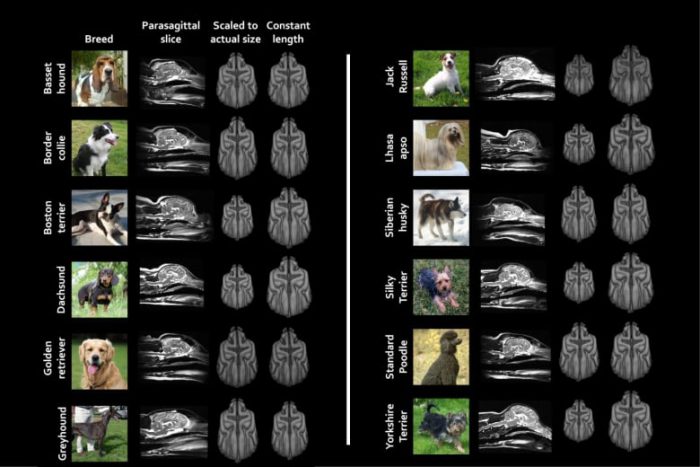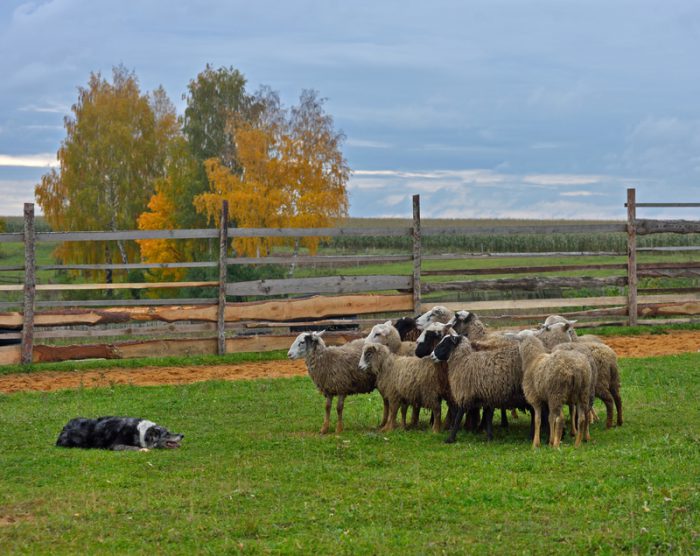Professor Erin Hecht knows dogs. In particular, this assistant prof of human and evolutionary biology at Harvard University knows dogs' brains.
In a study that was published this month, Erin wanted to discover how brain anatomy (its structure and content) changed depending on what the dog was being bred to do or look like.
In a recent interview with CBC Radio, she explained her study's most important questions.
"We wanted to see if brain anatomy was different across different breeds," she told the station. "And then, if so, what accounts for that difference? Is it body size? Is it head shape? Or could it be attributed to behaviour?"
Well-bred brains
Thousands of years of selective breeding has given us hundreds of different dog breeds. (Getty Embed)
It can be easy to think that different dog breeds exist because they've always been that way. Just like how there are, say, big, bold orange monarch butterflies and tiny, delicate Western pygmy blue butterflies.
But the difference in dogs is that these animal breeds have been influenced by human choices. When a domesticated animal is bred, people are selecting certain animals based on specific desired traits. These traits include physical, skill, and behaviour traits: loyalty, sense of smell, strength, size, appearance, tenacity, calmness, and so much more.
The ways in which breeding affects appearance is obvious. Just put a Chihuahua next to a Great Dane to see what we mean! But inside, are dogs' brains all just, well, brains?
Brains rewired

An example of the different brain scans used by Erin Hecht for her study. (JNeurosci)
To find out, Erin and her co-researchers used MRI scans of healthy dogs. An MRI is an X-ray used to see inside the brain. This allowed her to compare many different brains from the inside out — she could she how the brain was put together, not just its overall size or shape.
This is important because dogs already come in different sizes and have different head shapes, so you know right away some dogs will have different-shaped brains. But what about dogs that are a similar size, but who are bred to behave differently (a.k.a. a hunting dog versus a herding dog)? Can breeding for behaviour also change brain structure?
The answer appears to be yes! Though Erin was quick to say that she didn't "want to get too confident yet" about her findings, she noticed right away that even between two similarly-sized dogs, their brains were wired quite differently.
Smarty pups
"Stay behind me, bro. I got you!" The size difference between a Chihuahua's brain and Great Dane's is not as much as you might think. But how they're wired? That's another story... (Getty Embed)
In a nutshell, this means that while all dogs are dogs, breeding does change a dog's brain.
She also found that there isn't as much of a difference in brain size between our biggest and smallest breeds as you might think. And what about maybe the most obvious question: Is there a smartest breed of dog?
"I think that this research suggests that there are multiple different types of canine intelligence," she explained in the interview, "and that different breeds of dogs are specialized for different types of intelligence."
Which is another way of saying that how smart an animal is depends on what you want them to do. Is it hunt ducks? Herd sheep? Guard your home? Or just be extra good at cuddling on a Saturday afternoon?
Thanks to breeding, there's a perfect dog for every task. And a perfect brain for every dog.
 Border collies were bred to help herd sheep. Did this make their brains different from other dogs? (© Natallia Yaumenenka - Dreamstime.com)
Border collies were bred to help herd sheep. Did this make their brains different from other dogs? (© Natallia Yaumenenka - Dreamstime.com)









